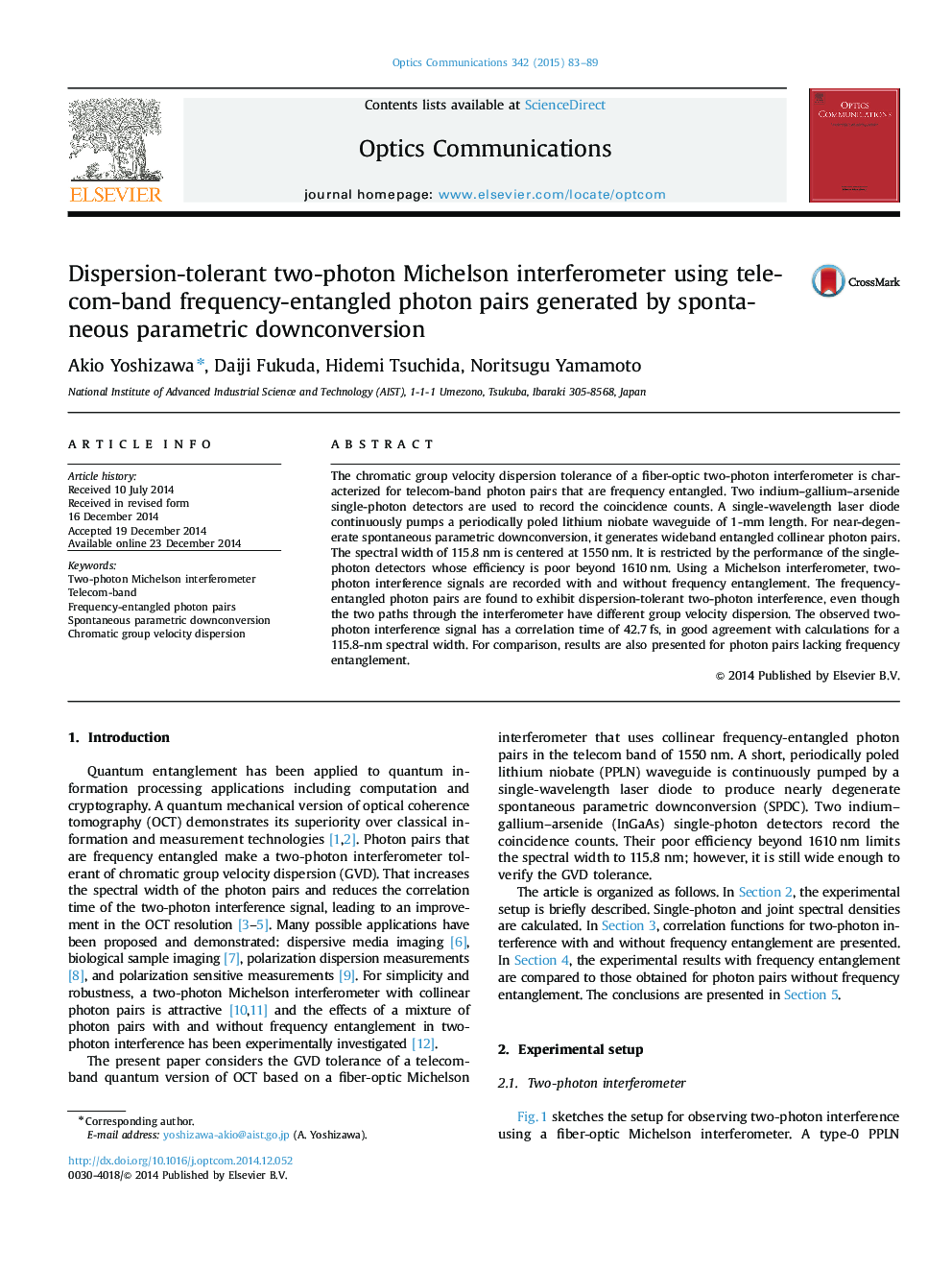| Article ID | Journal | Published Year | Pages | File Type |
|---|---|---|---|---|
| 7930001 | Optics Communications | 2015 | 7 Pages |
Abstract
The chromatic group velocity dispersion tolerance of a fiber-optic two-photon interferometer is characterized for telecom-band photon pairs that are frequency entangled. Two indium-gallium-arsenide single-photon detectors are used to record the coincidence counts. A single-wavelength laser diode continuously pumps a periodically poled lithium niobate waveguide of 1-mm length. For near-degenerate spontaneous parametric downconversion, it generates wideband entangled collinear photon pairs. The spectral width of 115.8Â nm is centered at 1550Â nm. It is restricted by the performance of the single-photon detectors whose efficiency is poor beyond 1610Â nm. Using a Michelson interferometer, two-photon interference signals are recorded with and without frequency entanglement. The frequency-entangled photon pairs are found to exhibit dispersion-tolerant two-photon interference, even though the two paths through the interferometer have different group velocity dispersion. The observed two-photon interference signal has a correlation time of 42.7Â fs, in good agreement with calculations for a 115.8-nm spectral width. For comparison, results are also presented for photon pairs lacking frequency entanglement.
Related Topics
Physical Sciences and Engineering
Materials Science
Electronic, Optical and Magnetic Materials
Authors
Akio Yoshizawa, Daiji Fukuda, Hidemi Tsuchida, Noritsugu Yamamoto,
